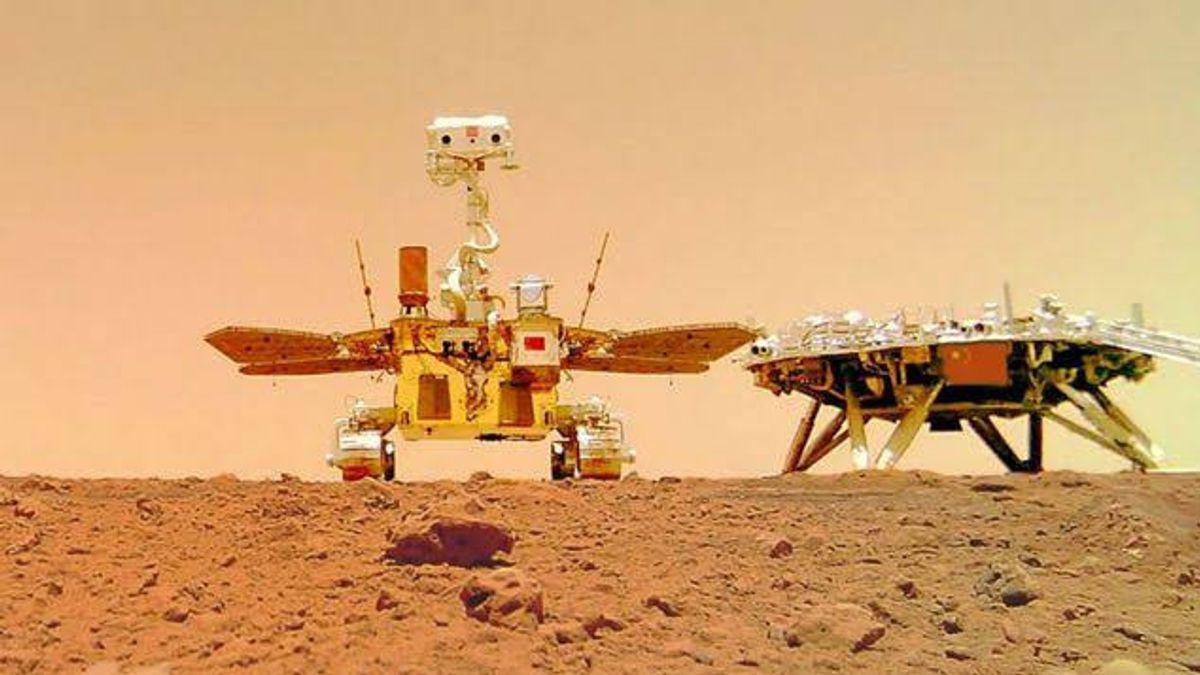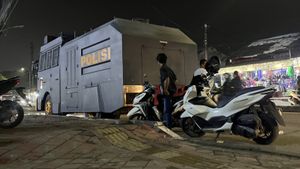JAKARTA - The last time I heard about the Chinese rover, Zhurong, was to find the biggest earthquake on Mars. But now it has been switched to inactive mode while waiting for the dust storm on the planet's surface to subside.
According to an official statement from China's National Space Administration (CNSA), the solar-powered Mars rover has now entered a state of inactivity due to winter and localized sand and dust storms.
Zhurong entered hibernation on May 18, with temperatures around minus 4 degrees Fahrenheit (minus 20 degrees Celsius) during the local Martian day and minus 148 F (minus 100 C) at night.
By mid-July, the temperature will drop even further. Dusty weather and very low ambient temperatures in the Martian winter will cause a decrease in the power generation capacity of the Zuhrong solar wing.
Meanwhile China's Tianwen 1 orbiter, which sent Zhurong to Mars last May, also detected sand and dust storm activity over Zhurong's landing area on Utopia Planitia with a medium resolution camera.
Scientists will continue to use the Tianwen-1 orbiter to monitor the weather in Mars' southern hemisphere. The orbiter is implementing remote sensing exploration of the global scope of Mars, and the current imaging area is mainly concentrated in the high latitudes of Mars' southern hemisphere.
Even so, Zhurong has a body that will help her survive the challenges of winter temperatures, sandstorms and dust.
This includes the ability to tilt the solar panel and maximize sun collection as well as a special anti-dust coating on the panel.
In fact, the Zhurong rover would be able to independently detect an increase in the sun's energy level and turn it on once again.
The rover is expected to resume activity in December, with the start of spring in the Northern Hemisphere and the cleaning of local dust storms.
Zhurong is not alone in the emergency there, NASA's InSight lander, which arrived on the Red Planet in November 2018, is also struggling to generate enough solar power to continue operations.
In contrast, NASA's Curiosity and Perseverance rover can continue their journey across the Martian surface regardless of the season, because they are powered by radioisotope thermoelectric generators, a type of nuclear power.
Similarly, China's Yutu rover on the Moon was also ordered to enter a state of inactivity on lunar night, which lasts about 14 Earth days.
The English, Chinese, Japanese, Arabic, and French versions are automatically generated by the AI. So there may still be inaccuracies in translating, please always see Indonesian as our main language. (system supported by DigitalSiber.id)








